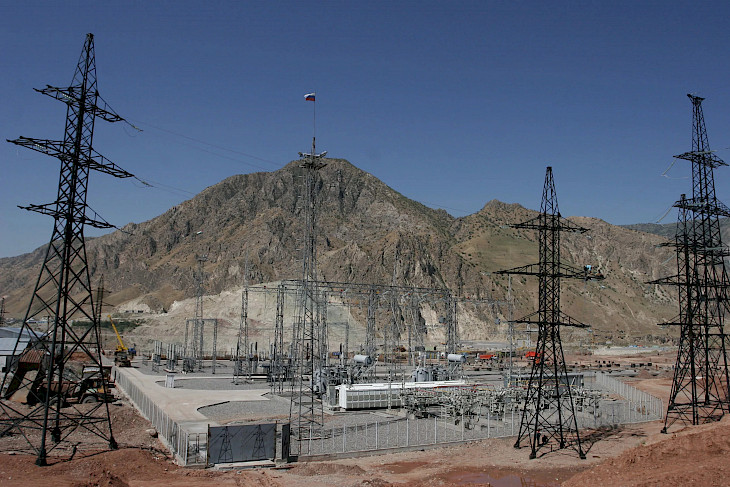Tajikistan achieved the best results among Central Asian countries in the 2024 Energy Transition Index, prepared by the World Economic Forum (WEF).
The country ranked 71st globally, scoring 53.6 points. These indicators allowed Tajikistan to surpass Kyrgyzstan (80th place, 52.7 points) and Kazakhstan (98th place, 50.1 points). Uzbekistan and Turkmenistan were not included in the ranking, according to Daryo news agency.
What is the Energy Transition Index (ETI)?
The Energy Transition Index (ETI) is a comprehensive tool for assessing the state of energy systems worldwide. The ranking is based on two key criteria:
- Efficiency of the current energy system (60% weight).
- Readiness for transition to a sustainable development model (40% weight).
Additional factors taken into account include:
- Accessibility and reliability of energy supply.
- Level of innovation in the energy sector.
- Quality of energy infrastructure.
- Government support for the sector.
- Investment volumes in the industry.
Global Leaders in the 2024 Ranking
As in previous years, the top positions in the 2024 ranking were dominated by Northern European countries:
- Sweden – 78.4 points.
- Denmark – 75.2 points.
- Finland – 74.5 points.
The global average score was 56.5 points, slightly higher than Tajikistan's result (53.6 points).
CIS Countries’ Positions in the Energy Transition Index
Among CIS countries, Azerbaijan achieved the highest result, ranking 38th with 60.3 points. The Central Asian countries included in the ranking were distributed as follows:
- Tajikistan – 71st place (53.6 points).
- Kyrgyzstan – 80th place (52.7 points).
- Kazakhstan – 98th place (50.1 points).
- Uzbekistan and Turkmenistan were not included in the 2024 ranking.
Energy Potential of CIS and Central Asian Countries
According to the UN, renewable energy capacity is rapidly expanding in Central Asia, with a focus on solar and wind power, leading to significant changes in the region’s energy structure.
Among CIS countries, Azerbaijan showed the most impressive results, ranking 38th with 60.3 points in the energy transition.
In Kazakhstan, investments in renewable energy increased by $0.8 billion as early as 2019. The country, rich in natural resources and with strong potential for large-scale wind and solar projects, aims to become a regional leader in green energy.
One of Kazakhstan’s most ambitious projects is the "Zhanatas" wind farm (100 MW) in Zhambyl region, the country’s largest wind power station, supported by Chinese investors and international financial institutions.
Another key project is the "Saran" solar power plant (100 MW) in Karaganda region. This facility significantly reduces the region’s carbon footprint and supplies electricity to tens of thousands of households.
Hydropower in Kyrgyzstan and Tajikistan
Unlike Kazakhstan, Kyrgyzstan and Tajikistan rely heavily on hydropower, generating over 90% of their electricity from hydro resources. However, their potential remains underutilized:
- Kyrgyzstan uses only 13% of its hydropower potential.
- Tajikistan utilizes only around 5%.
One of Kyrgyzstan’s key projects is the Kambarata-1 Hydropower Plant, which is being built with international investor support. Once completed, it will have a capacity of over 1,900 MW, making it one of Central Asia’s largest hydropower stations and a significant energy exporter.
A smaller but successful project is the solar power plant in Jany-Turmush village (Osh region), which provides electricity to over 100 households, reducing dependence on traditional energy sources.
Additionally, wind potential research is underway in Naryn region for constructing the first large-scale wind farm, expected to have a capacity of 100 MW.
Tajikistan’s Hydropower Ambitions
In Tajikistan, the most significant hydropower project is the Rogun Hydropower Plant, which is still under construction. Once completed, its capacity will reach 3,600 MW, allowing for a substantial increase in electricity exports and strengthening Tajikistan’s energy independence.
Another major initiative is the modernization of the Nurek Hydropower Plant, the country’s largest. This World Bank-funded project is introducing modern technologies to enhance the plant’s efficiency.
Uzbekistan’s Renewable Energy Push
Although Uzbekistan was not included in the 2024 ranking, the country is actively developing its renewable energy sector.
One of Uzbekistan’s most notable projects is its agreement with ACWA Power to build "Aral," Central Asia’s largest wind power plant, with a planned capacity of 5 GW.
Additionally, Uzbekistan is taking measures to reduce its carbon footprint, which has already brought the country $7.5 million in carbon financing.
CentralAsianLIGHT.org
January 15, 2025

